Peperomia Clusiifolia Jelly
Peperomia Clusiifolia Jelly, also known as Pink Variegated Jelly Peperomia, is a stunning houseplant with colourful variegated leaves featuring shades of green, cream, and vibrant pinky-red edges. This eye-catching foliage makes it a standout addition to any plant collection. Pet-friendly and suitable for beginners, Peperomia Jelly is an excellent choice for homes with pets and can also thrive in vivariums or terrariums. Its easy-going nature makes it a perfect option for those just starting with houseplants.
Care Guide for Pink Variegated Peperomia Clusiifolia Jelly
Light:
Peperomia Jelly prefers bright, indirect light. Too much direct sunlight may cause the variegation to fade or burn the leaves, while low light conditions may slow its growth. A spot near a bright window with filtered light is ideal.
Humidity:
This plant enjoys moderate humidity levels but is tolerant of typical household conditions. In a terrarium or vivarium, higher humidity will further support its health and growth.
Temperature:
Keep Peperomia Jelly in temperatures ranging from 18-24°C. Protect it from cold drafts or sudden temperature changes to prevent stress.
Watering:
Water when the top 2 cm of soil dries out. Peperomias prefer to stay on the drier side, so be careful not to overwater. Allow the soil to dry out slightly between waterings, and ensure the plant is in well-draining soil to avoid root rot.
Troubleshooting
- Yellowing Leaves:
This is often a sign of overwatering. Ensure the soil is drying out between waterings, and avoid letting the plant sit in soggy soil. - Leaf Drop:
Sudden changes in temperature, especially cold drafts, can cause Peperomia to drop its leaves. Keep it in a stable environment away from direct heat sources or cold air. - Faded Variegation:
If the colours on the leaves are fading, it may be due to insufficient light. Move the plant to a brighter spot with indirect sunlight to maintain its vibrant pinky-red edges. - Root Rot:
Overwatering and poor drainage can lead to root rot. Make sure the plant is in well-draining soil and the pot has drainage holes to allow excess water to escape.
Peperomia Clusiifolia Jelly, with its striking foliage and easy-care nature, is a beautiful and hassle-free choice for terrarium, vivarium, home and workplace.
Discover more tips and guidance on plant care at our dedicated page. Enhance your plants’ health with our premium, hand-blended potting mixes, crafted to meet their specific needs, available here. Complete the look with our wide selection of planters in various styles and sizes, perfect for any space – explore them here.
- How often should I water my Peperomia Clusiifolia Jelly?
- Water this plant when the top 2 cm of soil feels dry. It’s crucial to let the soil dry out slightly between waterings to prevent overwatering and root rot.
- Can the Peperomia Clusiifolia Jelly thrive in a terrarium environment?
- Yes, it’s well-suited for terrariums due to its preference for moderate humidity and indirect light. In a terrarium, it can enjoy a more controlled environment, which supports healthy growth.
- What should I do if the leaves of my plant start to lose their vibrant colours?
- If the leaf variegation begins to fade, move your plant to a location with brighter, indirect sunlight. This adjustment helps maintain the striking colour contrast on the leaves.
☀️ Light
Emoji Scale: ☀️☀️▫️ (Medium)
Peperomia Clusiifolia Jelly thrives in bright, indirect light. Position it near a window where sunlight is filtered through a curtain to avoid direct sun exposure, which can fade the beautiful variegation or even burn the delicate leaves.
💧 Water
Emoji Scale: 💧💧▫️ (Medium)
This plant likes its soil to dry out slightly between waterings. Check the top 2 cm of the soil, and if dry, it’s time to water. Be careful with overwatering as it can lead to root rot. A good drainage system will keep your Peperomia healthy and happy.
🌡️ Temperature
Emoji Scale: 🌡️🌡️▫️ (Average)
Maintain an ambient temperature of 18-24°C to keep your Peperomia Jelly comfortable. Avoid placing it near drafty windows or heat sources, which can cause stress and leaf drop.
💦 Humidity
Emoji Scale: 💦💦▫️ (Moderate)
While Peperomia Jelly copes well with average home humidity, it will appreciate a boost in moisture. Consider a pebble tray or occasional misting to enhance its environment, especially if you notice the tips of the leaves turning brown.
🪴 Repotting
Repot your Peperomia Jelly every 2-3 years or when it outgrows its pot. Use a well-draining soil mix to prevent water retention and promote healthy root growth. Spring is the best time for repotting, giving the plant a fresh start with more room to grow.
🐾 Pet Friendliness
Great news for pet owners! Peperomia Clusiifolia Jelly is non-toxic and safe for cats and dogs. You can keep this plant within paw’s reach without worry.
✅🪴 Recommended Locations at Home
This plant fits beautifully in bright kitchens, living rooms, or offices. It’s compact and versatile, making it perfect for shelves, desks, or as part of a vibrant plant arrangement.
✨ Other Plant Features
The striking variegated leaves of Peperomia Jelly make it a visual pleasure, brightening any space with its pops of pink and green. It’s not just about looks; this plant is also known for its resilience and adaptability, making it ideal for both novice and experienced plant enthusiasts.
If you have more questions, feel free to ask Mossbot for advice or contact us via our website. Remember, we offer a free plant hospital service if your Peperomia Jelly ever feels under the weather!
The Ultimate Care Guide for Peperomia Plants: Suitable for Vivariums and Terrariums
Introduction and History Peperomia plants are a diverse genus of over 1,000 species, originating from tropical and subtropical regions around the world, including Central and South America. First formally classified in the 18th century, Peperomia species are celebrated for their ornamental foliage and compact growth, making them perfect for indoor settings. Known as the “radiator plants,” their adaptability and charm have made them a popular choice for plant enthusiasts of all levels.
Description and Features Peperomia plants are characterised by their small stature, thick stems, and fleshy leaves, which vary greatly in shape, size, and texture. Common species include:
- Peperomia Argyreia (Watermelon Peperomia): Recognisable by its striped, watermelon-like leaves.
- Peperomia Rosso: Features deep green, lance-shaped leaves with a striking red underside.
- Peperomia Hope: A trailing variety with small, round leaves perfect for hanging planters.
- Peperomia Prostrata (String of Turtles): Known for its delicate, round leaves resembling turtle shells, ideal for terrariums.
- Peperomia Piccolo Banda: Boasts striking, silver-striped leaves with dark green veins, adding a touch of elegance to any space.
- Peperomia Obtusifolia: A classic variety with thick, glossy green leaves that’s perfect for beginners.
Key Features
- Pet-friendliness: Peperomia plants are non-toxic and safe for pets, making them a great choice for households with animals.
- Low-light tolerance: They thrive in indirect light, adapting well to shaded or moderately lit areas.
- Water efficiency: Their semi-succulent leaves store water, making them drought-tolerant.
- Compact size: Perfect for terrariums, vivariums, or small spaces.
- Beginner-friendly: Easy to care for and forgiving of occasional lapses in maintenance.
- Suitable for pet owners: Their non-toxic nature ensures they are safe around cats and dogs.
Care Instructions
1. Watering
- How much water does a Peperomia need? Water only when the top 2-3 cm of soil feels dry. Overwatering can lead to root rot, while underwatering may cause leaves to droop or wrinkle.
- Signs of overwatering: Yellowing leaves, mushy stems, and soft, blackened roots.
- What to do if you overwater your Peperomia: Allow the soil to dry out completely before the next watering. If root rot has set in, trim affected roots and repot in fresh, well-draining soil.
- Underwatering signs: Curling or wilting leaves. Rehydrate the plant by watering thoroughly and allowing excess water to drain.
2. Light Requirements
Peperomias prefer bright, indirect light but can tolerate low-light conditions, making them ideal for vivariums, terrariums, or rooms with filtered sunlight. Avoid direct sunlight, which can scorch their leaves.
3. Humidity and Temperature
- Humidity: Moderate to high humidity is ideal, mimicking their tropical origins. Terrariums provide the perfect environment for maintaining consistent humidity.
- Temperature: Maintain between 18-24°C. Protect from drafts, heaters, and cold temperatures below 10°C.
4. Plant Food
Feed with a diluted, balanced houseplant fertiliser every 4-6 weeks during the growing season (spring and summer). Reduce feeding in autumn and winter. For those searching how to fertilise a Peperomia plant, ensure you use a gentle, liquid formula.
5. Pruning
Regularly prune leggy stems and remove damaged or yellowing leaves to maintain the plant’s compact shape. How to prune a Peperomia: Use clean scissors and cut just above a node to encourage new growth.
Common Issues and Troubleshooting
1. Yellow Leaves
- Cause: Overwatering, poor drainage, or insufficient light.
- Solution:
- Check soil moisture; let it dry out if soggy.
- Move the plant to a location with bright, indirect light.
2. Leggy Growth
- Cause: Insufficient light.
- Solution: Relocate to a brighter spot or supplement with a grow light.
3. Droopy or Wrinkled Leaves
- Cause: Underwatering.
- Solution: Water thoroughly and consider increasing the frequency slightly if the soil dries out too quickly.
4. Pests
- Cause: Mealybugs, spider mites, or fungus gnats.
- Solution: Wipe leaves with neem oil or use an eco-friendly pest spray, both available on our website. Isolate the plant to prevent spreading and monitor closely.
5. Root Rot
- Cause: Overwatering and compacted soil.
- Solution: Repot with fresh, well-draining soil and trim away affected roots.
Propagation Methods
1. Leaf Cuttings
- Select a healthy leaf with a short stem and insert it into moist sphagnum moss or soil.
- Keep the cutting in a warm, humid environment, such as a terrarium or propagation station.
- Roots and new growth will appear in a few weeks.
2. Stem Cuttings
- Cut a healthy stem with at least one leaf and place it in water using a propagation tube.
- Change the water weekly to prevent stagnation.
- Once roots form, transfer the cutting to soil.
3. Division
- Remove the plant from its pot and gently separate clumps with roots intact.
- Replant each section in fresh soil and water lightly.
Sphagnum moss and stunning propagation stations to propagate Peperomia plants are available in our shop Highland Moss, ensuring successful and hassle-free propagation.
Is a Peperomia Plant Right for You? Peperomia plants are excellent for:
- Beginners: Easy care requirements make them a great starter plant.
- Terrariums and vivariums: Their compact size and love for humidity make them a perfect fit.
- Pet owners: Non-toxic and safe for households with cats and dogs.
- Gifts: Their variety and charm make them an ideal present for plant enthusiasts.
With proper care, Peperomia plants can thrive for years, adding beauty to terrariums, vivariums, and homes alike. Whether you’re wondering how to care for a Watermelon Peperomia or need tips on propagation, this guide has you covered. Remember, all plants purchased from Highland Moss come with a scannable QR code for detailed care instructions and access to our Moss Bot for 24/7 plant care support.

Free Care Guide With Every Purchase
Scan the plant pot QR for instant access to our care guide for your plant. No hassle, no stress, just healthy and happy plants.
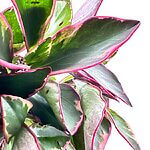 Peperomia Clusiifolia Jelly
Peperomia Clusiifolia Jelly



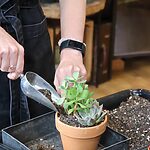
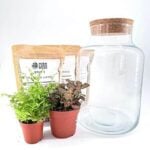
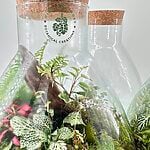
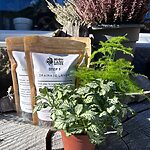

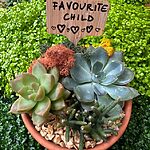
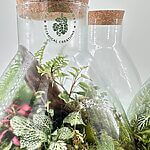


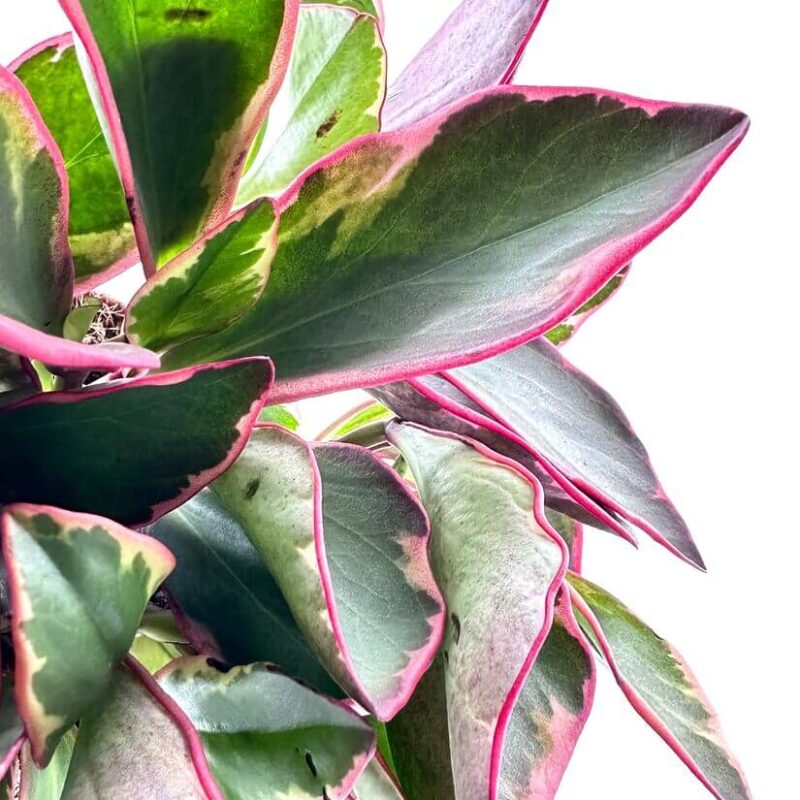


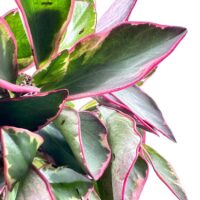
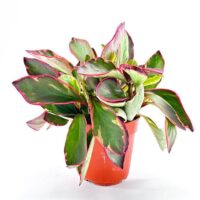

Reviews
There are no reviews yet